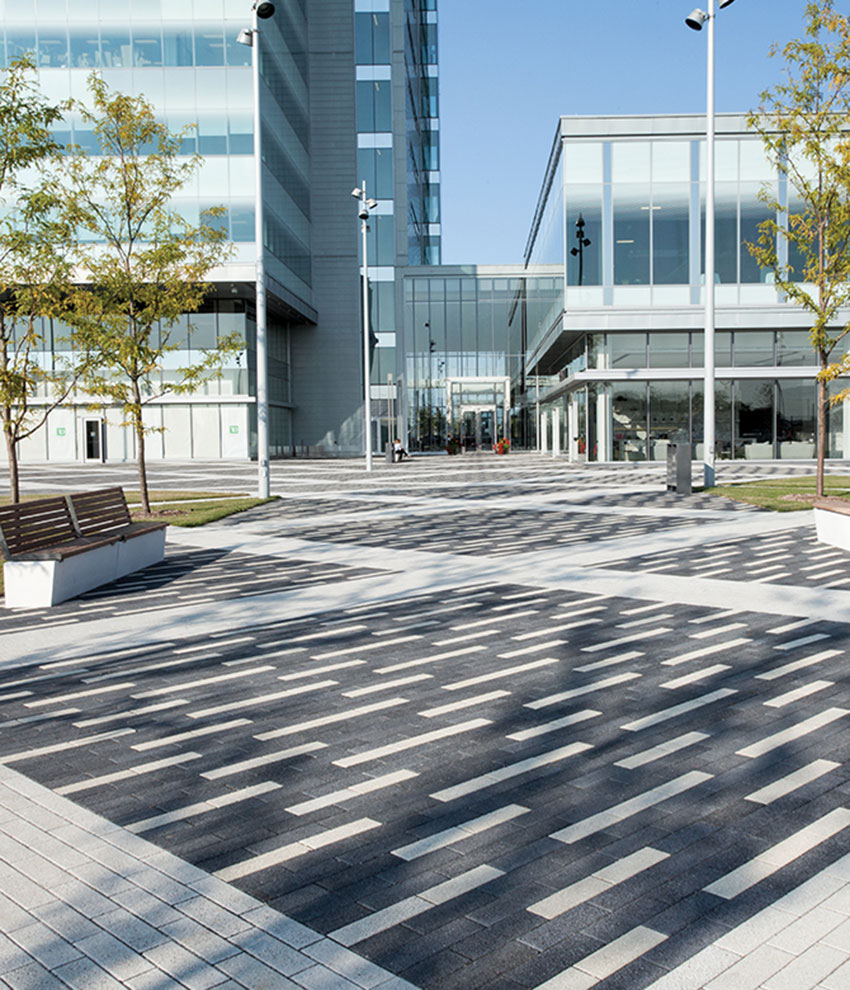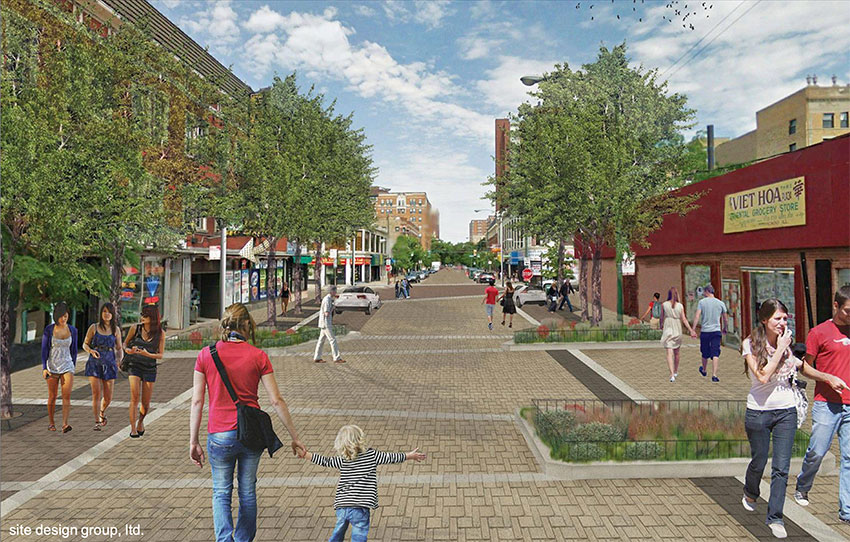The Climate-Positive Benefits of Concrete in Outdoor Architecture
Today’s sprawling urban environments create more emissions, increase local temperatures, decrease run-off opportunities, increase chances for flooding, and mix run-off with outdated combined sewer systems compounding pollutants in waterways. The need for carbon sinks, green environments, and water runoff management has never been greater. One of the most natural carbon sinks is soil. Combined with plant materials and other easy design details can address the above. Globally, landscape architects and architects have made climate action commitments with tangible goals and objectives with specific timelines. In 2018, the American Society of Landscape Architects (ASLA) joined the America Is All In movement, a national coalition of 4,100 states, cities, companies, and organizations that, ALSA says, “remain committed to achieving US greenhouse gas emission reduction targets as part of the 2015 Paris climate agreement. ASLA was one of the first organizations representing the built environment community to join the coalition.”
More recently, the ASLA Board of Trustees ratified the International Federation of Landscape Architects (IFLA) Climate Action Commitment, joining a coalition of 70,000 landscape architects in 77 countries in committing to limiting planetary warming to 1.5°C (2.7 °F). This is the largest coalition of landscape architecture professionals, the ASLA states, ever assembled to advance climate action. Also, ASLA became an official signatory of the Architecture 2030 1.5°C COP26 Communiqué. ASLA joined with Architecture 2030 to “call for all sovereign governments to reduce greenhouse gas emissions by 65 percent by 2030 and achieve zero emissions by 2040, which would accelerate the current timeline to achieve emission reductions outlined in the Paris Climate Accord by a decade.”

Photo courtesy of Unilock
This 10-acre park with artfully designed pavers acts as the backbone of a transit-oriented development while linking to smaller, more intimate neighborhood parks.
Walkable Communities
There is a much larger scope to consider than simply the embodied carbon value of an individual product. A holistic approach is required to look at the full scope of design and how it will affect everyday lives. The concept of walkable communities is an excellent example of this. If we continue to create more walkable communities, we can reduce the need for singular transportation. That is significant as transportation makes up 29 percent of emissions, with 58 percent of that value from passenger vehicles. Improved transit systems, biking routes, and safe pedestrian options enhance walkability. This not only has positive health improvements but will save citizens money. That money can be spent in the local economy. This tactic includes mixed-use developments and higher-density developments close to transit access.

Image courtesy of site design group, ltd.
This “shared street” in Chicago is friendly to pedestrians and bicyclists as well as slow-moving vehicles.
Vaughan Metropolitan Centre
An example of transit-oriented development is the Vaughan Metropolitan Centre just north of Toronto, Ontario. With plans solidified for an expanded bus and subway network, a master plan was created to transform this area into a dynamic urban hub.
The 60-hectare (150-acre) development connects to the Greater Toronto area, and the 10-acre park acts as the backbone while linking to smaller, more intimate neighborhood parks. This creates a vibrant downtown core for Vaughan that thoughtfully integrates mobility and lifestyle while delivering all amenities and necessities for young and not-so-young.
Complete Streets
Complete streets have been recognized as a critical component of walkable communities and a natural complement to sustainability efforts. They promote mobility, community, and many elements of street design, construction, and operation that can improve environmental sustainability. By narrowing traffic lanes, adding bike lanes, and increasing walkways, mobility and accessibility of the space improve while also creating an opportunity to make it programmable for the community.

Photo courtesy of Unilock
The pavers used for Dundas Place, in London, Ontario, mimic the flow of the nearby Thames River.
Dundas Place in London, Ontario, was reimagined with collaboration from the city residents and business owners to create a multifunctional, multi-programmable space that realigns the pedestrian realm to be more prominent than the vehicular realm.
The materials chosen make it more tactile and create an atmosphere celebrating its history and cultural purpose. The design mimics the nearby Thames River, and the road leads there. The flexible corridor, which includes concrete pavers, offers many experiences along its length, exuding innovation, vibrancy, creativity, and entrepreneurialism, making this section the civic heart and a favorite place of Londoners.
Reduce Nonpermeable Surfaces
Features such as permeable pavers, bioswales, planters, gardens, and trees reduce stormwater and flooding issues, increase the quality and purity of groundwater, and reduce the heat-island effect. At the same time, these systems sequester carbon, whether in the concrete or planting systems.
Argyle Street, Chicago’s first shared street, (a roadway designed for slow travel speeds where pedestrians, cyclists, and motorists all share the right of way) aims to increase safety and create a sense of place for the community to shop and gather, while also capturing and infiltrating the majority of the stormwater. Some 35,000 square feet of permeable pavers delineate pedestrian, parking, and shared space. Real-time sensors gather data about water management capabilities that will help inform future projects.
The redesign achieved a 31 percent reduction in impervious surface area, diverting 89 percent of stormwater from the grey infrastructure system. Retailers have also reported improved shopping and dining environments and a more attractive, programmable streetscape and outdoor setting. The project was designed by site design group, ltd. (site).
Permeable Paving Systems
A permeable paving system is a viable component of any green infrastructure. It improves stormwater management using detention control or volume control design options, improves local water quality, reduces flooding, and decreases the chance of heating waterways with runoff. Permeable pavers are highly aesthetic, durable, and easy to maintain.
Starting at the top, a permeable paver system includes nine layers:
- Permeable paver
- Joint aggregate
- Setting bed
- Base aggregate
- Sub-base aggregate
- Subgrade
- Edge restraint
- Underdrain
- Mechanical base stabilization
Research studies report5 that GHG emissions are 78 to 95 percent lower for permeable pavements and bio-retention basins than for conventional drainage systems.
When replacing conventional asphalt pavement, the reduction is about 46 percent. The life-cycle cost of permeable pavements can be up to 17 percent lower, and potentially more, depending on the design, and maintenance costs are also lower.6,7 The permeable paver options ensure design flexibility and creativity for many applications, including vehicular, pedestrian, and heavy-duty.

Image courtesy of Unilock
A permeable paver system includes nine layers.
Another key contributor to climate-positive design is incorporating solutions to help address the heat island effect, particularly in urban settings where a concentration of buildings, vehicles, heaters, and air conditioning units along with dark surfaces such as roadways absorb heat and increase the urban temperatures more significantly when compared to rural settings. Among the solutions of adding trees, shade structures, green roofs, and walls, creating cooler streets and pavements is essential. This is easily accomplished by selecting concrete and unit pavers with high Solar Reflectance Index (SRI) values. All of these green infrastructure elements help to reflect solar rays instead of absorbing them.









